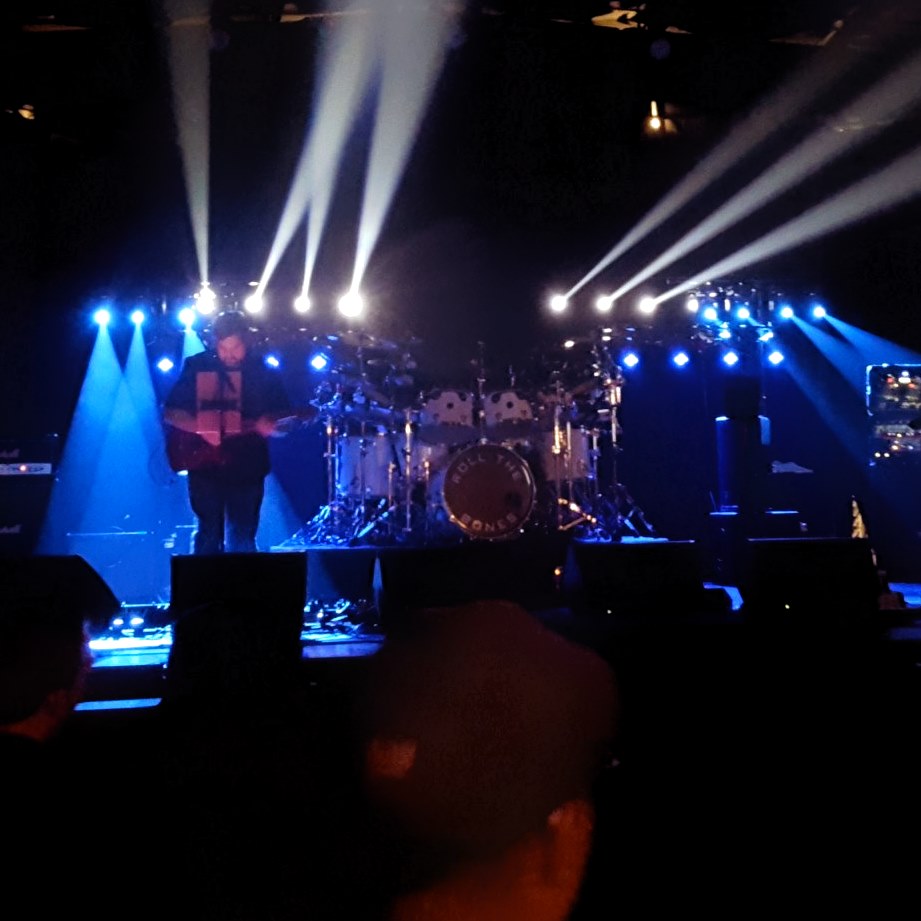Beam width, alignment, and angles really do matter.
Please Remember:
The opinions expressed are mine only. These opinions do not necessarily reflect anybody else’s opinions. I do not own, operate, manage, or represent any band, venue, or company that I talk about, unless explicitly noted.

 Want to use this image for something else? Great! Click it for the link to a high-res or resolution-independent version.
Want to use this image for something else? Great! Click it for the link to a high-res or resolution-independent version.Just last week, a long-in-the-planning show with Roll The Bones came to fruition. I was out at FOH, running both audio and lighting. I can say that the gig went decently, but I didn’t quite satisfy my own hopes in the lighting department. The results weren’t terrible by any means, it’s just that there was a failure to “spark” in my own imagination.
So, what went wrong?
Beam Diameter
Luminous flux (brightness, in other words) is important for a lighting design to have impact, but it’s not the only factor in play. Nifty aerial effects that hold up across various lighting positions require both brightness and larger beam cross-sections. That is to say, if you want it to look like a big column of light is blasting out from somewhere upstage – guess what? You need to have a fixture that will spit out a collimated stream of photons with a large beam diameter.
I had made the decision to try some mini-beams that I found online. They’re very affordable, and actually a bit surprising in terms of output. Based on my informal measurements, they can still manage to deliver 100 lux (about the minimum lighting for working in an office) at a distance of 80 feet. The tradeoff, though, is that the beam diameter is small. As such, when fired through haze, you don’t end up with a large total volume of illuminated airborne particles along a line extending from your eye. Practically speaking, this means that the beams look pretty darn okay when they’re pointed generally in your direction, but lose impact in a hurry as the light is pointed away at larger angles.
Alignment Issues
I really like things to be geometrically neat and tidy, but I couldn’t get the mini-beam portion of the setup to stay horizontally aligned. I would make adjustments, and things would seem okay for a bit, but within a few minutes I’d have one or two fixtures out of whack again. (You can really see the effect of this in the picture above.) My guess is that there were two problems in play:
1) I really did not have nearly enough torque applied on the wing-nuts holding the lights to their O clamps.
2) The mini-beam bases have so little mass compared to the moving head that the whole assembly is very sensitive to movement in general.
So everything was skiddy-whompus all the time, and it drove me crazy.
The Math: It Wasn’t Done
The biggest overall problem was directly attributable to me. I was so worried about getting light in people’s eyes that I programmed the whole show with a general reference angle of roughly 45 degrees. In other words, if I wasn’t shooting the lights parallel to the floor or higher, they were at about 45 degrees of tilt or lower. At the time, in my head, that made sense, but in practice it robbed the whole show of maximum impact. If I would have bothered to do the tiniest bit of trigonometry, I would have realized that – for a trim height of about 8 feet – a nearly 70 degree angle is required for the lights to be pointed at a stage’s front edge that’s 20 feet away from the light hangs.
The tangent of 45 degrees is 1, meaning that the light aiming point is at the end of a line that’s just the same length as the trim height. In practice, this worked out to my whole show being far too oblique to have much “wow” factor. The washes were mostly hitting empty deck instead of people, and the spots were doing the same thing…which also reduced their effectiveness as an aerial visual.
The good news is that when you know what’s wrong you can fix it. I have another big show coming up very soon, and I am determined to learn from my mistakes in time.